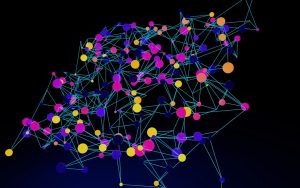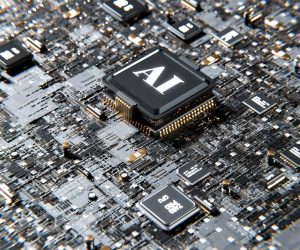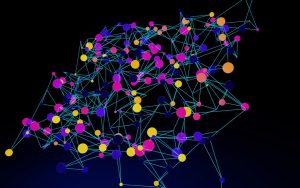Generative AI’s Environmental Impact Explained
Discover the environmental impact of generative AI and learn how it affects our planet. Dive in to make informed decisions today!
Carbon Footprint of Generative AI Models
Energy Consumption
Generative AI models require substantial computational resources to train and operate. These models often involve complex neural networks with millions, if not billions, of parameters.
The training process can take days or even weeks on high-performance computing clusters, which consume significant amounts of electricity. This energy consumption directly contributes to the carbon footprint of these models, as the majority of global electricity is still generated from fossil fuels.
Data Center Emissions
Data centers, where the computational work for AI models is conducted, are significant contributors to carbon emissions.
These facilities require a constant power supply not only for computing but also for cooling systems to maintain optimal operating temperatures. The environmental impact is amplified when data centers are located in regions with a high carbon intensity of electricity.
Efforts to mitigate this impact include using renewable energy sources and improving energy efficiency in data center operations.
Lifecycle Emissions
The carbon footprint of generative AI models is not limited to the operational phase. Lifecycle emissions consider the entire process, from the manufacturing of hardware components to their eventual disposal.
The production of GPUs and other specialized hardware involves mining and processing raw materials, which are energy-intensive activities. Additionally, the disposal of outdated or broken hardware contributes to electronic waste, further impacting the environment.
Mitigation Strategies
To reduce the carbon footprint of generative AI models, several strategies can be employed.
One approach is optimizing algorithms to be more energy-efficient, thus requiring less computational power. Another strategy is to shift towards sustainable energy sources for powering data centers.
Companies can also invest in carbon offset programs to compensate for their emissions. Additionally, researchers are exploring the use of smaller, more efficient models that can achieve similar performance levels with reduced environmental impact.
Energy Consumption in Generative AI Training
Understanding the Scale of Energy Use
The training of generative AI models, such as those used in natural language processing and image generation, requires vast computational resources.
These models often involve billions of parameters, necessitating extensive data processing and storage capabilities. As a result, the energy consumption during training can be substantial, often comparable to the energy usage of entire small cities.
Factors Contributing to High Energy Demand
Several factors contribute to the high energy demand of generative AI training.
Firstly, the sheer volume of data processed during training sessions requires significant computational power. Secondly, the complexity of the algorithms, which often involve deep learning techniques, demands prolonged processing times on high-performance hardware.
Lastly, the need for repeated iterations to optimize model accuracy further amplifies energy consumption.
Environmental Implications
The environmental impact of this energy consumption is significant. The carbon footprint associated with training large AI models can be considerable, given the reliance on electricity generated from fossil fuels in many regions.
This contributes to greenhouse gas emissions, which exacerbate climate change. Moreover, the production and disposal of the hardware used in AI training also have environmental repercussions.
Efforts to Mitigate Energy Usage
In response to these concerns, researchers and companies are exploring various strategies to reduce energy consumption in AI training.
Techniques such as model optimization, which involves reducing the number of parameters without sacrificing performance, are being developed. Additionally, the use of more energy-efficient hardware and the adoption of renewable energy sources for data centers are being prioritized to minimize the environmental impact.
The Role of Policy and Innovation
Policy interventions and technological innovations play a crucial role in addressing the energy demands of generative AI.
Governments and organizations are encouraged to establish regulations that promote sustainable practices in AI development. Furthermore, ongoing research into alternative computational methods, such as quantum computing, holds the potential to revolutionize energy efficiency in AI training.
Sustainable Practices for AI Development
Energy-Efficient Algorithms
One of the primary ways to mitigate the environmental impact of generative AI is through the development of energy-efficient algorithms.
These algorithms are designed to perform complex computations using less power, thereby reducing the carbon footprint associated with AI training and deployment. By optimizing code and leveraging advanced mathematical techniques, developers can significantly cut down on the energy required for AI operations.
Utilizing Renewable Energy Sources
Another critical practice is the use of renewable energy sources to power data centers that support AI development.
Transitioning from fossil fuels to solar, wind, or hydroelectric power can drastically reduce the emissions associated with AI technologies. Companies are increasingly investing in renewable energy credits and on-site renewable energy installations to ensure their AI operations are more sustainable.
Model Optimization and Pruning
Model optimization involves refining AI models to be more efficient without sacrificing performance.
Techniques such as model pruning, where unnecessary parts of a neural network are removed, can lead to significant reductions in computational requirements. This not only speeds up processing times but also decreases the energy consumption of AI systems.
Implementing Carbon Offsetting
For AI operations that still result in carbon emissions, implementing carbon offsetting strategies can help neutralize their environmental impact.
Companies can invest in projects that reduce carbon emissions elsewhere, such as reforestation or renewable energy projects, to compensate for the emissions generated by their AI activities. This approach allows organizations to take responsibility for their carbon footprint while continuing to innovate in AI.
Promoting Collaborative Research
Collaboration among researchers, developers, and industry leaders can drive the development of more sustainable AI practices.
By sharing knowledge and resources, stakeholders can work together to create standards and guidelines that prioritize sustainability. This collaborative approach can lead to the discovery of new techniques and technologies that further reduce the environmental impact of AI.
Mitigating Environmental Impact of Generative AI
Optimizing Energy Efficiency
One of the primary strategies for reducing the environmental impact of generative AI is optimizing energy efficiency.
This can be achieved by designing algorithms that require less computational power. Researchers are focusing on developing more efficient models that can perform the same tasks with fewer resources.
Additionally, using hardware accelerators like GPUs and TPUs, which are specifically designed for AI tasks, can significantly reduce energy consumption.
Utilizing Renewable Energy Sources
Another approach to mitigate the environmental impact is by powering data centers with renewable energy sources. Companies can invest in solar, wind, or hydroelectric power to run their AI operations.
This transition not only reduces the carbon footprint but also aligns with global sustainability goals. Many tech giants are already committing to using 100% renewable energy in their data centers, setting a precedent for others to follow.
Implementing Carbon Offsetting Programs
Carbon offsetting is an effective way to counterbalance the emissions produced by generative AI.
Organizations can invest in projects that reduce carbon emissions elsewhere, such as reforestation or renewable energy initiatives. By calculating the carbon footprint of their AI operations and investing in equivalent offset projects, companies can work towards achieving carbon neutrality.
Encouraging Responsible AI Development
Promoting responsible AI development involves setting industry standards and guidelines that prioritize environmental sustainability.
This includes encouraging transparency in energy usage and carbon emissions, as well as fostering collaboration among stakeholders to share best practices. By creating a culture of responsibility, the AI community can collectively work towards minimizing environmental harm.
Advancing Research in Sustainable AI
Investing in research focused on sustainable AI technologies is crucial for long-term environmental mitigation.
This includes exploring alternative materials for hardware, developing more efficient cooling systems for data centers, and innovating in low-power AI models. Continuous research and development can lead to breakthroughs that significantly reduce the ecological footprint of generative AI.
FAQ
Q1: What are the cost implications of adopting generative AI technologies, particularly in terms of environmental impact?
A1: The cost implications of adopting generative AI technologies are multifaceted, encompassing both direct financial costs and environmental considerations. On the financial side, deploying generative AI requires investment in powerful hardware, such as GPUs and TPUs, which are necessary to handle the intensive computational demands. This can lead to significant upfront costs. Additionally, the energy consumption associated with training and running AI models contributes to ongoing operational expenses. Environmentally, the carbon footprint of AI models is a growing concern, as the energy required often comes from non-renewable sources. Organizations can mitigate these impacts by optimizing algorithms to be more energy-efficient, investing in renewable energy sources, or selecting cloud providers committed to sustainability. Balancing these costs with the benefits of AI, such as increased efficiency and innovation, is crucial for responsible adoption.
Q2: How accessible is generative AI technology for individuals or organizations without a strong engineering background?
A2: Generative AI technology is becoming increasingly accessible, even for those without a strong engineering background. Many platforms now offer user-friendly interfaces and pre-trained models that simplify the process of deploying AI solutions. These tools often provide drag-and-drop functionality or no-code environments, allowing users to experiment with AI without needing to write complex code. Additionally, online resources, tutorials, and community forums provide valuable support for beginners. However, understanding the basics of AI principles and ethical considerations remains important to ensure responsible use. Organizations can also partner with AI specialists or consultants to bridge any technical gaps and facilitate smoother integration into their existing workflows.
Q3: What are the main challenges in implementing generative AI, and how can they be addressed to ensure compatibility with existing tools?
A3: Implementing generative AI poses several challenges, particularly regarding compatibility with existing tools and systems. One major challenge is ensuring data compatibility, as AI models require large volumes of high-quality data, which may not be readily available in existing formats. Organizations can address this by investing in data preprocessing and integration tools that facilitate seamless data flow between systems. Another challenge is the potential need for infrastructure upgrades to accommodate the computational demands of AI. This can be addressed by leveraging cloud-based solutions that offer scalable resources without the need for significant on-premises investments. Furthermore, integrating AI into existing workflows may require retraining staff and adjusting business processes. Clear communication, training programs, and phased implementation strategies can help ease this transition, ensuring that AI enhances rather than disrupts current operations.
Takeaway
Ready to supercharge your tech game? Try our cutting-edge AI tool today for instant results. Stay ahead of the curve with the latest tech trends by subscribing to our updates. Join our vibrant tech community to connect, learn, and share insights with like-minded enthusiasts. Elevate your tech experience now! This move is widely interpreted as a strategic response to recent challenges.











Comments